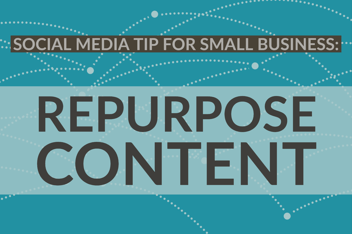10 Steps to Building a Winning Speaker Program for Your Company or Client
Here’s the goal: Building visibility for your CEO and other top executives through speaking slots at your industry’s leading conferences and events.
But how do you get there from here?
At JONES, we've developed a strategic approach to help our clients create successful speaker programs that improve executive visibility and accelerate sales. In this blog, we'll outline 10 key steps to building a winning speaker program. We'll touch on each step briefly here, and then dive deeper into each one in future posts.
Before we begin, congratulations on recognizing the importance of a strategic approach to executive speaking engagements. Many tech companies handle this piecemeal, simply responding to opportunities as they arise.
By developing a comprehensive plan as outlined in this post, you'll ensure that your public speaking efforts align closely with your organization's goals and reinforce your key messaging.
It's important to note that speaking engagements are just one component of a well-rounded executive visibility strategy. For a broader perspective on how they fit into the bigger picture, we recommend reading our post, “The Key Elements of a Successful Executive Visibility Program.”
Now, let's dive into the 10 steps to building a winning speaker program for your company or client!
Step 1: Evaluate what has been done in the past.
Getting a firm handle on speaking opportunities from the past year or two will give you a clear benchmark of where you stand now. You can then build on prior successes as well as avoid repeating any missteps.
Sit down with your team and, if possible, your executives and ask questions like:
-
How many speeches were delivered in the past year (or two)?
-
How were they received?
-
What types of engagements were they?
-
How many leads did we generate as a result?
-
How many deals did we close?
It’s also a good idea to identify previous speaking engagements delivered by your competitors’ executives.
Step 2: Set targets for the future.
Based on your findings in step one, determine a reasonable number of speeches each executive could cover in the year ahead. Then recommend these numbers to the C-suite team and get buy-in from each executive on how many they will commit to doing.
Setting clear targets ensures your speaker program aligns with overall business objectives and executive capacity.
Step 3: Determine the right type of venue.
Consider each person’s personality, effectiveness as a speaker and willingness to engage. This will guide the best type of event for that person: A keynote demands confidence and high production values, while a fireside chat allows for a more forgiving, conversational approach. For those new to speaking, panel discussions are ideal.
Step 4: Set revenue-related metrics.
Having everyone agree to the same goals increases the likelihood the speakers (and the sales team) will make the most of their opportunity. How many leads can you expect to generate from each speaking engagement? How many closed deals do you think you can directly influence?
Connect the dots between speaking and revenue generation so everyone is clear on the objective.
Step 5: Build a library of speaker resumes.
By resumes, we mean a list of past speaking engagements, as well as other thought leadership contributions and awards. You will also need speaker bios and headshots. If possible, create a video reel with clips from previous speaking engagements.
A well-organized speaker library makes it easy to quickly respond to opportunities and showcase your executives' expertise.
Step 6: Develop speaker abstracts for each opportunity.
An abstract is a brief description of the speech used to apply for specific opportunities. Make sure the topic is clear, intriguing and relevant to the venue. And don’t forget to top it off with a catchy title.
Step 7: Fill out the application carefully and submit early.
This is mostly self-explanatory, but suffice it to say the early bird gets the worm when it comes to prime speaking engagements. Be the first application on the organizer’s desk.
Early submissions can make the difference between securing a prime speaking slot and being waitlisted.
Step 8: Evaluate secured opportunities.
You have offers in hand! Now it’s time to gather information about each opportunity so the larger team can evaluate them before accepting. You may need to negotiate better placement in the conference agenda – ideally early in the conference and before any competitors.
Step 9: Prepare the executive.
Does the executive need the speech written by you or someone else? Does she need speaker training, or at least some reminders about tempo, body posture, hand gestures, etc.?
Schedule a rehearsal session to work out any kinks.
Proper preparation is key. Even experienced speakers benefit from rehearsals and feedback before important engagements.
Step. 10: Heavily promote the speech—before, during and after the event.
Now it’s time to throw yourself back into PR mode and get the word out about the upcoming event.
Hit all the bases: social media, outbound email, texts—and link or hashtag the event. Make use of the event’s PR machine also; the organizers should provide you with logos, an attendance list, media list and schedule.
If there are opportunities to do video—either live or after-the-fact—definitely take advantage of this. We typically record the speaker’s practice sessions or dry run. This enables us to gather great video clips to use in a million different ways.
Remember, speaking engagements are just one part of a well-rounded executive visibility strategy and, as you can see, creating a dynamic speaker program has a lot of moving parts!
To learn how to integrate your speaker program with other visibility tactics like media coverage, social media, and awards, read our comprehensive overview of The Key Elements of a Successful Executive Visibility Program.
Remember: A successful speaker program is an ongoing effort that requires consistent attention and refinement
Some companies choose to outsource their speaker program—and, often, their full executive visibility program—to an agency like JONES because it requires significant time, expertise and resources to execute effectively. A specialized agency can:
-
Leverage established relationships with event organizers and media contacts to secure high-profile opportunities
-
Provide expert guidance on crafting compelling speaker abstracts and presentations
-
Offer professional speechwriting and speaker coaching services
-
Manage the complex logistics of application deadlines, event logistics and promotional activities
-
Ensure consistency across all elements of the executive visibility program, including speaking engagements, media placements and social media presence
-
Measure and report on the program's impact, tying it back to business objectives
By partnering with an experienced agency, companies can maximize the impact of their executive visibility efforts while allowing their internal teams to focus on core business activities.
If you'd like to explore how JONES can help you build a winning speaker program or a comprehensive executive visibility program, book some time on my calendar to learn more about how we can help.
-1.png?width=1652&height=294&name=Jones(RGB)-1.png)












